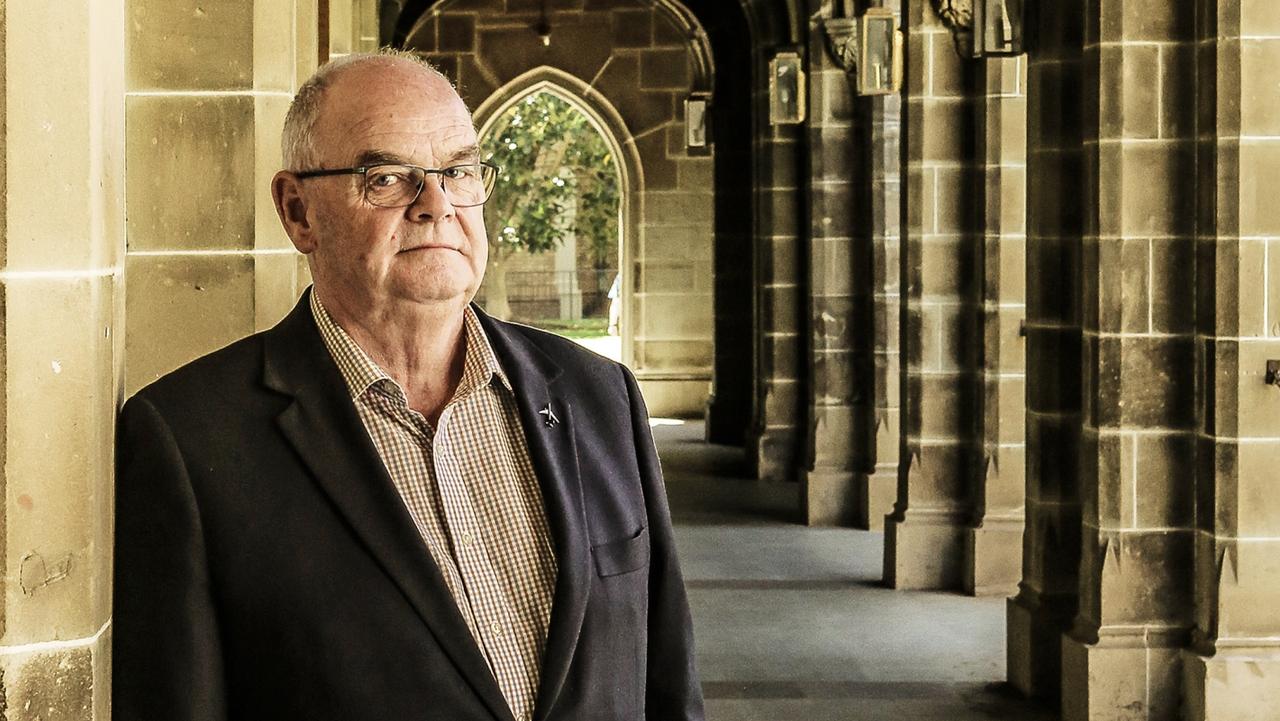Demographics change the schools game

IT'S a cool June day in the inner-city doctor's surgery, opposite a busy Brisbane public hospital, and the new clients begin to wander in, dressed in pyjamas and dressing-gowns, seeking a quick consultation. We are nearing the end of the financial year and the state budget won't cover the pathology and radiology tests the hospital doctors want, so these tests have been classified as non-essential.
They aren't, of course, so the doctors pull out their patients' intravenous drips, tape over their canulas and send them over the road to the surgery, where another doctor redoes the examination, writes new referrals and the federal government picks up the tab.
This is the reality of cost shifting at grassroots level between state and federal governments whenever the federal government moves in to improve the standards of health or education services offered by state governments.
In education, the form of cost shifting employed by the states is to rely on the growth of low-fee independent schools in fast-growing outer suburbs. These schools are overwhelmingly funded by the commonwealth and by local parents, so the state governments need to build fewer schools.
This sort of attitude is why the Queensland and West Australian governments will quietly pocket their extra $1.2 billion from that nice Christopher Pyne and spend the money where they can buy a few more votes. The other states will do the same with their $1.6bn.
State governments are like 27-year-old gen Y kids living at home: the idea of paying their own way is not a concept they embrace.
This is where the Gonski education plan fell over: it assumed state governments would break the habit of the past 113 years and share costs with the commonwealth for their brave new world.
Whether the four states that signed the agreement intended to honour it is moot, as the Labor government was doomed and the incoming Abbott government was keen to sink the plan however it could. You can be confident they will not honour it now and will be quite happy to be accused by Tony Abbott of "poor form".
The problems for the education system started, as they often do, with the relevant unions, in this case the teachers unions. I'm an old union official and a common tactic we used in the 1980s to try to save public-sector union jobs in hospital laundries and kitchens was to define the problem in terms of public needs. If you listen closely, Australian Workers Union leaders are still doing it.
You never tell the taxpayers you want them to hire more members of your union. So all the political arguments in the Labor Party forums and in the caucus from the teachers union lobby were always phrased in terms of improving outcomes, keeping kids in school to Year 12, reducing class sizes, hiring more teacher aides or tacking on a new prep year.
Funnily enough, all of these reforms meant more teachers. Did they improve our international rankings for maths, reading and science? Unfortunately not. This would require the teachers union behaving more like a professional association and raising the quality of outcomes, and unions don't like this sort of uppity nonsense from their members.
At Australian Development Strategies we've been profiling and researching schools for a decade now and we've found about one in three parents believes in the public school system and is happy enough keeping their kids in state schools; one in three can afford non-government schools and has one nearby to use; and one in three would like a non-government school but can't afford it.
The big driver for this last group is that they usually went to school to Year 12. Despite the best intentions of the teachers unions' campaign, this experience seemed to convince many of these matriculates to avoid state schools for their own kids.
Into this political mix in 1996 ventured the cautious John Howard, keen to build his battler base from the disaffected tradies who had just voted Liberal for the first time. He wisely kept his federal money separate from the states and came up with his socioeconomic status funding plan, which was a politically brilliant way of driving the growth of new independent schools in working-class areas.
The SES system was devised by academics, so an academic scores highly, as does a suburban doctor. A plumber scores relatively poorly on the education and status components and has a low SES, despite earning more than a doctor and having a weekender in Kyogle and a rental flat on the Gold Coast.
The self-employed plumber was also able to minimise taxable incomes and when his partner returned to work for four days a week running the local solicitors' office, they were able to consider a non-government school option for their children by the time the youngest was in grade five at the local state primary school.
When these tradies started dropping their little boys and girls off at the new low-fee independent school funded by Howard, they began to see themselves as living the Liberal dream and Howard reaped consistent political benefits in the following two elections.
However, the teachers unions and their political mates in the Greens hated the SES funding scheme because the new independent school teachers were in a different union or not in a union at all.
But the SES system was progressive in that lower-income and working-class families got a lot more money out of the commonwealth under the formula, while the richer professional families living inside what Bernard Salt calls the goat's cheese curtain got very little. In theory, that is.
In practice, the grandfathering of funding to the pre-SES scheme created a raft of anomalies where wealthier schools kept their funding, and this has been the source of much criticism.
We have just completed a research paper for Independent Schools Queensland that shows, under the Howard scheme, independent schools increased market share from 11.3 per cent in 2001 to nearly 14 per cent in 2008.
This was a time of relative prosperity, when independent enrolments were funded by part-time working mothers who were able to work sufficient hours to fund school fees.
However, the GFC saw a jump in underemployment - a loss of working hours from those employed. This was more pronounced for women; especially those aged 35-44, often parents of primary school-age children, seeking to use this income to fund school fees.
Changes initiated by Labor also cut real childcare funding and regulated the childcare industry, driving up costs. It is now harder for working mothers of primary school children to obtain the working hours they are seeking than it was during the worst of the GFC, when underemployment was 9 per cent.
As a result of this economic pressure, market-share growth for independent schools began to flatten after the GFC and year-on-year growth for independent and Catholic schools dropped to near zero by last year.
This is good news for the state school system, which last year finally stopped bleeding market share. The teachers unions got their wish in the end, mainly because the Labor government made such a mess of the economy.
But the emerging picture for the school sectors has been far from uniform. The market has been fundamentally altered since the Howard era by demographic changes and a better flow of information to education consumers via My School, for which the long-suffering Julia Gillard deserves acknowledgment.
Demographically, we are now finding our non-government school gen X mums are likelier to be Catholic and professional. If they're in a professional central business district workplace they tend to be rubbing shoulders with professional men who could be agnostic Greens voters who prefer the government school system, or Protestant Tory voters who graduated from a CBD private school.
Many good Catholic professional girls are still getting secure public-sector jobs, marrying the local Catholic plumber and sending their kids to the local Catholic systemic school. But we are finding more Anglicans than Catholics in high-fee Catholic schools, and as many Catholics as Anglicans in high-fee independent schools.
At night these gen X mums order their groceries and clothing online, then surf the net, finding the best schools and corresponding property locations. The My School site allows them to find out all they need to know about National Assessment Program - Literacy and Numeracy scores, fees and Index of Community Socio-Educational Advantage scores, the replacement indicator for the old SES.
What the evidence shows is that these families are increasingly choosing a school with the highest SES or ICSEA score for the lowest possible fee. This means that in the new marketplace for education the outer suburbs are being swamped with demand from blue-collar and middle-class families for low-fee independent and Catholic schools with higher ICSEA scores, and there's less pressure per capita on the state school systems in these areas.
This trend is causing a vacuum in more established suburbs, as parents who formerly would have chosen medium-fee independent schools charging about $10,000 are instead choosing the local low-fee Christian school. Others, including recent Asian migrants, are moving to rent closer to the CBD, where we are seeing a decline in the market share of some Catholic and independent schools.
In these wealthier professional suburbs where we find Greens voters, top-income professionals and public servants, the high-SES government school is king. Our fee modelling shows many of these parents paying more in government school costs than the fees charged by top CBD Catholic schools. Think violins and end-of-year trips to Italy.
These government schools are bursting at the seams. If these parents can't afford a move to the inner city, some of them camp on enrolment night outside the school office like they used to do outside the box office to get U2 tickets.
All this to get their kid into a government prep school that is squeezed into the local primary school oval because the state government planners sold the original infants' school a decade ago, thinking it wasn't needed.
Whatever model Pyne can come up with to cope with this new political reality, he should realise a few facts. First, parents now don't care too much about the sector of the school they choose, if the results are sound. If standards drop, they leave quickly to another school or sector. They are relatively mobile.
To assess these school results, they increasingly rely on the accuracy of online information about alternatives, such as My School, as well as unofficial blogs
They believe that a good way to get better results is to send their child to a school where they rub shoulders with kids whose motivated parents score more highly than they do on ICSEA or SES.
And they are looking for a school where the principal has relative independence from state and federal education bureaucrats, where the teachers are professionally motivated and well paid, and where parents are part of the solution.
It's about better outcomes, not necessarily about hiring more members for public sector unions.
John Black is chief executive of Australian Development Strategies and a former Labor senator for Queensland.



